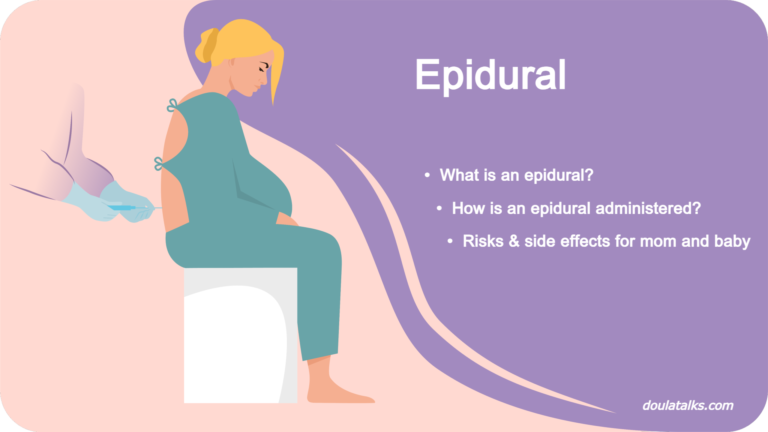In This Article:
- Water breaking signs
- What does water breaking look like?
- Water breaking vs discharge or urine
- Should I go to the hospital as soon as my water breaks, even with no contractions?
- Does it hurt when your water breaks?
- Artificially rupturing the amniotic sac
- How long after my water breaks will I deliver?
- Mucus plug
Water breaking during labor is a term used to describe the rupturing of the amniotic sac, which contains the fluid that surrounds and protects the developing fetus in the uterus. When the amniotic sac ruptures, the fluid inside it may leak out of the vagina, which is commonly referred to as “water breaking”.
In most cases, the water breaking is a natural part of the labor process and occurs as the body prepares for delivery. However, in other cases, the amniotic sac may rupture before the labor actually begins.
There is no set level of cervical dilation that a woman must reach before her water breaks. In fact, a woman’s water can break at any point in the pregnancy, including before labor has even started. The timing of the water breaking is influenced by a variety of factors, including the baby’s position, the amount of amniotic fluid present, and the strength of the amniotic sac.
Once the water breaks, labor typically begins within a few hours. If the water is clear and does not have a greenish tint in it (this tint is known as meconial water), you can stay home and wait for contractions to begin. Drinking a lot of fluids is recommended, and I would add a recommendation to sleep/rest to be prepared to manage contractions when they start. Once there are a few more signs that labor is progressing, including a good pattern of contractions (see more information in “Knowing when it’s time: when to head to the hospital for labor”), you should start heading to the hospital.
When the water breaks, the amniotic sac that protects and surrounds the baby ruptures, which means that the baby is no longer protected from the outside environment. This can increase the risk of infection, which is why healthcare providers generally recommend that women give birth within 24 hours after their water breaks. However, it’s important to note that the risk of infection depends on several factors, including the woman’s and baby’s overall health, whether there were any complications during pregnancy or labor, if the woman is positive for Group B Streptococcus (GBS), and how long it has been since the water broke. If you are being responsible, taking your temperature every two hours, not going into a tub, and minimizing vaginal exams, the risk of infection is lower.
If the woman has not gone into labor within 24 hours of the water breaking, healthcare providers may recommend an induction of labor or other interventions to help speed up the process and reduce the risk of infection. It is OK to keep asking if there is a true subjective need for you to be induced or is it just following protocol. If it is a protocol-based recommendation, you can decide to continue waiting for birth to begin. While waiting, continue drinking, checking your temperature, and paying attention to the baby’s movements.
Water breaking signs
The signs of water breaking during labor can vary from woman to woman. Some common signs that may indicate that the amniotic sac has ruptured and the water has broken include:
A sudden gush of fluid
This is the most obvious sign of water breaking, and it can be a significant amount of fluid that soaks through your clothing and onto the floor.
A slow trickle of fluid
In some cases, the fluid may leak out slowly over time, so you may feel dampness in your underwear or notice a steady trickle of fluid.
A sensation of warmth or wetness
You may feel a sudden sensation of warmth or wetness in your vaginal area.
It’s important to note that not all women experience the same signs of water breaking. Some women may not notice any signs at all, while others may experience a combination of the above signs.
When the amniotic sac ruptures, the fluid might leak out of the vagina slowly, which can be mistaken for urine or increased vaginal discharge. The leakage may be continuous or intermittent and may be accompanied by a feeling of wetness or dampness.
It is important to be aware of the signs of a slow leak of amniotic fluid, as it may increase the risk of infection and may require medical attention. Signs of a slow leak may include:
- A sudden increase in vaginal discharge
- A persistent feeling of wetness in the vaginal area
- A strong odor to the fluid, which may indicate infection
- A change in the color or consistency of the fluid, which may also indicate infection
What does water breaking look like?
In most cases, the water breaking looks like a clear, odorless fluid that comes out of the vagina. However, the color and consistency of the fluid can vary depending on several factors, including the stage of labor, the baby’s position, and the woman’s health.
Here are some common characteristics of the fluid that may come out when the water breaks:
Clear or slightly pinkish in color
In most cases, the fluid is clear or slightly tinged with pink, which is a sign of normal fetal blood circulation.
Watery or slightly sticky
The fluid is usually thin and watery, although it may be slightly sticky or mucus-like.
Odorless
Amniotic fluid is generally odorless, although it may have a slightly sweet or musky scent. Sometimes it smells like semen.
Discolored or foul-smelling fluid
In some cases, the fluid may be discolored or have a foul odor, which may indicate the presence of infection or meconium, which is a baby’s first bowel movement.
Also Read:
Water breaking vs discharge or urine
Water breaking, discharge, and urine can all feel and look similar, but they have different characteristics.
The fluid that comes out when the water breaks is usually clear or slightly pinkish, odorless, and watery. The amount of fluid can be large or small, and it may come out in a gush or a slow trickle. Discharge, on the other hand, is a normal part of pregnancy and may increase as the due date approaches. It is usually clear or white and may be thin or thick in consistency. It may also have a mild odor, but it should not have a foul smell or be accompanied by itching or burning. If you are experiencing an increase in discharge, try keeping the vaginal area clean and dry, wear cotton underwear, and avoid douching or using scented products in the area.
Urine leakage is another common issue during pregnancy and may be caused by the pressure of the baby on the bladder. Urine is usually yellow or clear and may have a strong odor if it is concentrated. It may come out in small amounts, or it may be a larger leak that requires a change of clothing. If you suspect that you are leaking urine, it is important to keep the area clean and dry, change your underwear frequently, and do pelvic floor exercises to strengthen the muscles that control the bladder.
Should I go to the hospital as soon as my water breaks, even with no contractions?
In some cases, the water may break without any accompanying contractions. This is known as premature rupture of membranes (PROM). PROM occurs when the amniotic sac ruptures before the onset of labor.
Your obstetrician (OB) will likely advise you to come in for an evaluation and may recommend inducing labor, but if you don’t have any signs of labor, it is ok to stay home and wait for labor to start.
It is important to monitor your symptoms closely and report any changes to your healthcare provider, such as a fever, vaginal bleeding, or changes in fetal movement.
Does it hurt when your water breaks?
Most women do not experience pain when their water breaks. In fact, many women do not even feel it happening, especially if the rupture is a slow leak rather than a sudden gush. However, some women may feel a sudden pop or a warm sensation as the amniotic sac ruptures, and this sensation may be slightly uncomfortable. Some women may also experience mild cramping or contractions after their water breaks, which can become more intense as labor progresses.
Contractions may become more intense and frequent after the water breaks. This is because the amniotic fluid acts as a cushion for the baby, and once it’s gone, the baby’s head may press more firmly against the cervix, causing contractions to intensify. The water also acts as a buffer for contraction pain, and without it, you may experience stronger and more painful contractions.
If you experience sudden and severe abdominal pain, vaginal bleeding (though not a discharge-like bleeding also known as a bloody show, which is a sign of good normal progress, but instead gushing blood), or changes in fetal movement, seek medical attention right away.
Artificially rupturing the amniotic sac
Artificially rupturing the amniotic sac is a medical procedure called amniotomy. During an amniotomy, a healthcare provider will use a sterile hook to break the amniotic sac.
The procedure is usually performed during a vaginal exam while the healthcare provider’s finger is already inside the cervix. The hook or finger is used to make a small tear in the sac, allowing the amniotic fluid to escape.
Personally, I am not in favor of using this procedure to start labor before any contractions or dilation occurred. In fact, I feel that doing so during early labor is bad practice for several reasons: It is not proven to start labor, it has all the risks associated with water-breaking, it is a non-reversible procedure that starts another medical protocol, and it causes contractions to feel stronger and more intense, which may influence the decision to use an epidural or other pain medications that, in turn, may start a cascade of interventions. Breaking your water when you are 8 to 9 cm dilated and nearing the end of labor is a completely different thing, and it should be considered depending on the position and station of the baby.
How long after my water breaks will I deliver?
The time between the water breaking and delivery can vary widely and depends on several factors, including the woman’s overall health, the baby’s gestational age, and whether there are any complications during labor.
For some women, labor may start on its own shortly after the water breaks, while others may need medical interventions to help induce or speed up labor. In some cases, if the woman and baby are both healthy and there are no signs of infection, the labor may actually occur 2 to 3 days later.
Mucus plug
Some confuse one with the other, but water breaking and losing the mucus plug are two separate events.
The mucus plug is a thick, gelatinous substance that forms in the cervix during pregnancy to help protect the baby from infection. Losing the mucus plug, also known as “show”, may occur in the weeks leading up to labor. It is a sign that the cervix is starting to soften and dilate. The mucus plug may be lost in one piece or in smaller amounts over time and may be tinged with blood or have a pinkish color.
While losing the mucus plug may be a sign that labor is approaching, it does not necessarily mean that the water will break or that labor will start immediately.
Overall, while losing the mucus plug and water breaking are both important signs to watch for during pregnancy and labor, they are separate events with different implications for the timing and progress of labor.
I wish you a wonderful and happy birth!
Questions?
If you have any questions about this topic/article, please feel free to contact me through email at: liat@doulatalks.com
Liat Salomon is a certified doula since 2010 and is working in the San Francisco Bay Area in California. She has assisted in hundreds of births and has extensive experience with VBAC.
The information in this article does not constitute medical advice or diagnosis. It is meant for informational purposes only.
Related Articles:











